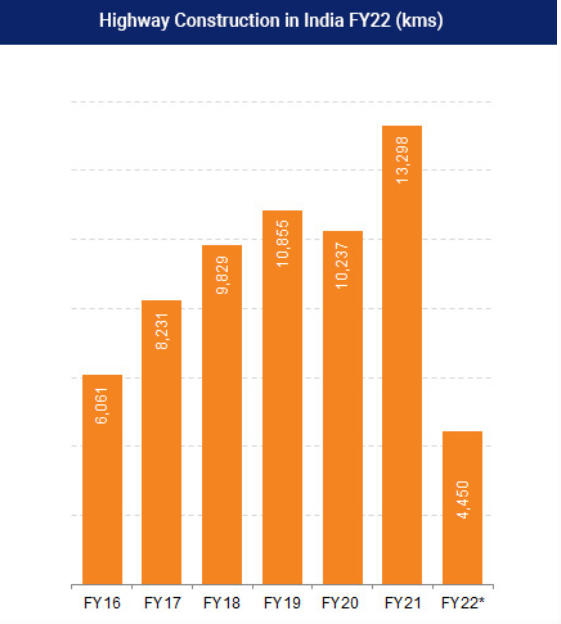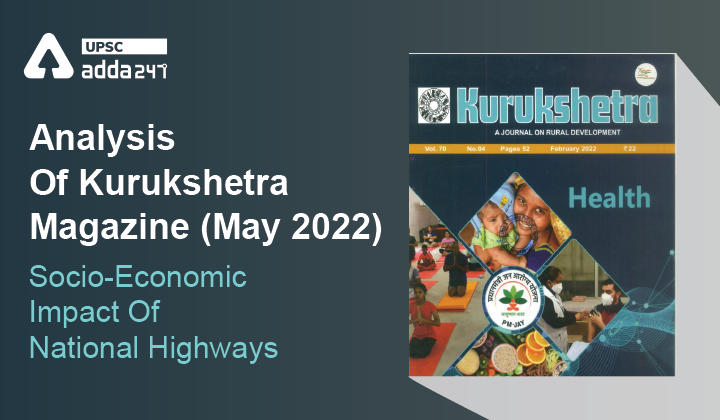Table of Contents
Socio-Economic Impact Of National Highways
Introduction
- The impact of National Highways consists of direct or first-round effects, and indirect or a sum total of all later-round effects.
- Direct effects are mostly observed in the form of increased mobility, reduced travel time, etc.
- The indirect effects, on the other hand, consist of structural changes in the economy due to enhanced opportunities which would result from the increase in mobility arising from the development of infrastructure.
Key Benefits of National Highways
- The pulsating economy of a country depends on the roads that serve as its arteries. Therefore, road transport has emerged as a dominant segment with a share of 4.8 per cent in India’s GDP
- Road infrastructure is the most important of all public assets, as they encourage economic activity between the large cities and the towns they happen to connect along the way.
- Such connectivity enables economic activity to spread, allowing under-developed regions to catch up and drive balanced and inclusive growth.
- The Golden Quadrilateral project initiated under Pradhan Mantri Gram Sadak Yojana in late 2000 connected the hinterland with various critical financial centres and cities, thereby boosting economic growth.
- Thus, road construction provides a fillip to other sectors of the economy, including steel, cement, auto, real estate.
Road Network in India
- India has the second-largest road network globally, spanning a total of 5.89 million km. The road network moves 64.5% of all goods in the country.
- Additionally, 90% of India’s total passenger traffic employs a road network to commute.
Initiatives by GOI
- NHAI plans to construct 25,000 kilometres of national highways in 2022-23 at a pace of 50 km per day.
- India’s Gati Shakti program has consolidated a list of 81 high impact projects, out of which road infrastructure projects were the top priority. The major highway projects include the Delhi-Mumbai expressway (1,350 kilometres), Amritsar-Jamnagar expressway (1,257 kilometres) and Saharanpur-Dehradun expressway (210 kilometres). The main aim of this program is a faster approval process which can be done through the Gati shakti portal and digitized the approval process completely.
- Under Phase-I of Bharatmala Pariyojana, the Ministry has approved implementation of 34,800 km of national highways in 5 years with an outlay of Rs. 5,35,000 crore (US$ 76.55 billion). Under this scheme, 22 greenfield projects (8,000 kms length) are being constructed; this is worth Rs. 3.26 lakh crore (US$ 43.94 billion).
- The government also aims to construct 23 new national highways by 2025.

- The government has allocated Rs. 111 lakh crores under the National Infrastructure Pipeline for FY 2019-25. Earlier in 2015, India embarked upon Bharatmala Pariyojana to connect the entire country through a network of highways, a steady growth observed since.
- The government has approved the implementation of 34,800 km of 23 new national highways till 2025, with an outlay of Rs. 5,35,000 crores.
- Despite pandemic lockdown, India constructed 13,298 km of highways in FY21, with a record of 37 km per day in March 2021.
Conclusion
The Government, through a series of initiatives, is working on policies to attract significant investor interest. A total of 200,000 km of national highways is expected to be completed by 2022. A robust road network will continue to be an essential pillar in India’s rapid economic recovery in the coming years.



 TSPSC Group 1 Question Paper 2024, Downl...
TSPSC Group 1 Question Paper 2024, Downl...
 TSPSC Group 1 Answer key 2024 Out, Downl...
TSPSC Group 1 Answer key 2024 Out, Downl...
 UPSC Prelims 2024 Question Paper, Downlo...
UPSC Prelims 2024 Question Paper, Downlo...
